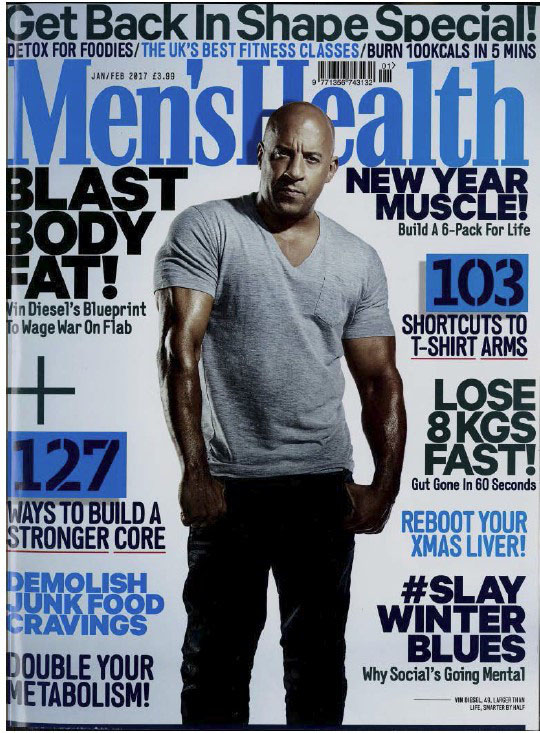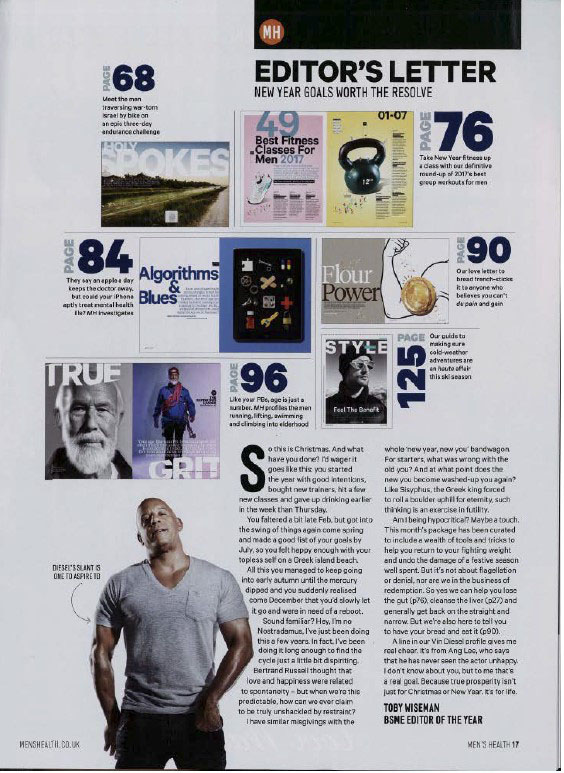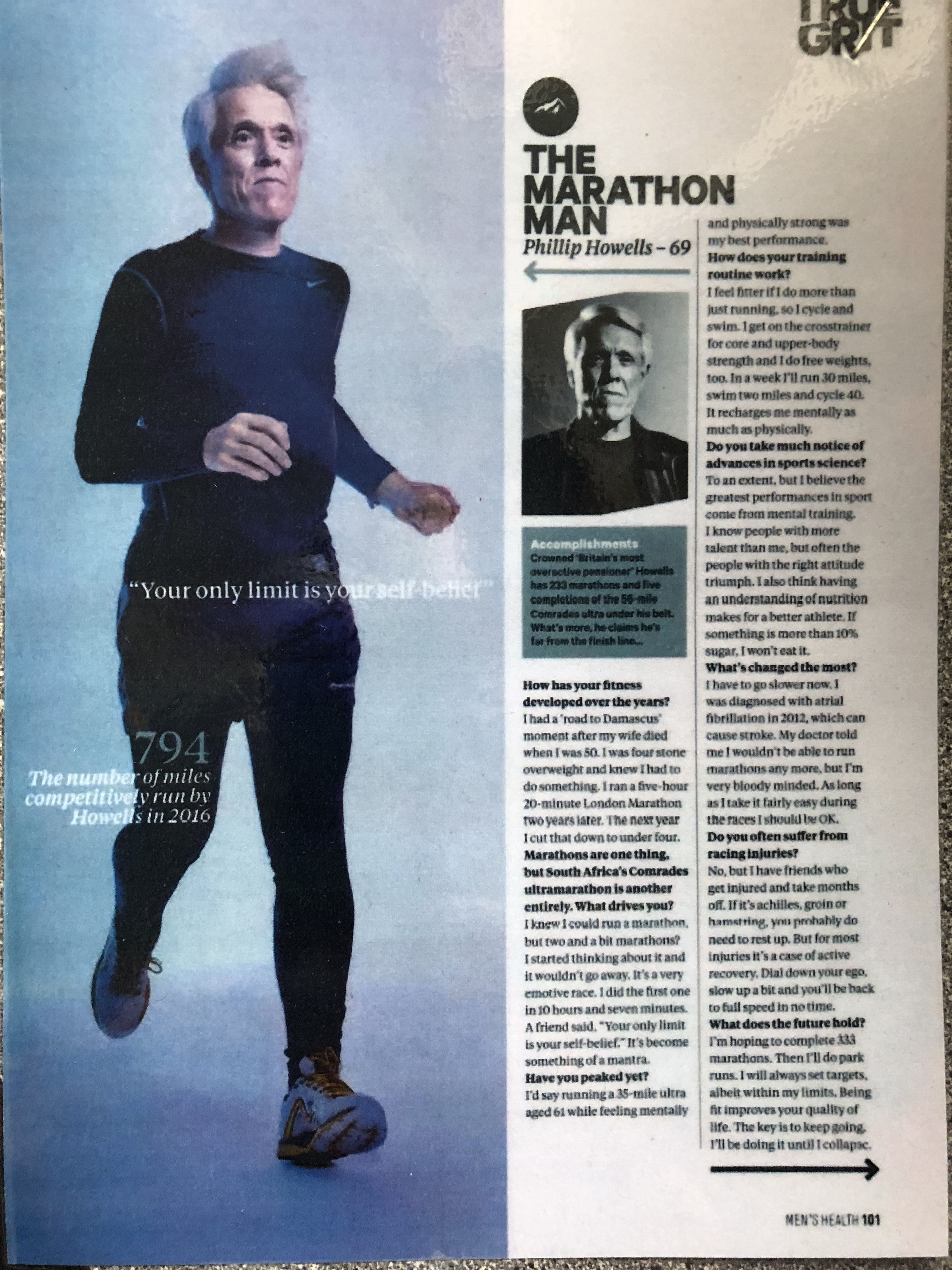Research –
men and women’s health magazine – both play appeal to the male gaze. With men’s health magazine being marketed towards men and women’s magazine being marketed towards women who want to achieve the male gaze. The women are far mor sexualised than the men, with 90% of women’s health magazine front covers featuring sexualised women, and just 40% of men’s health magazine featuring sexualised men.



Semiotics
Representation – straight ‘alpha male’ men – reactionary – reinforces the idea that men need to be powerful and strong – “get back in shape special”
Use of capital letters – exclamation points – colours – dialogue “true grit” – all appeal to men
Actor Vin Diesel (dominant signifier) – appeals more to men than women
“Best fitness classes for men” – target audience is undoubtedly men
Icon – picture of Vin Diesal
Indexical link – sweat = worked out
Genre – Steve Neale states that genres all contain instances of repetition and difference, difference is essential to the to the economy of the genre. Neale states that the film and it’s genre is defined by two things: How much is conforms to its genre’s individual conventions and stereotypes.
I’d argue that the genre of this magazine is lifestyle / fitness aimed at men
Narrative –
Print Language –
‘The School of Life’ video ‘How to be a man’ presents the ‘cool’ man and the ‘warm’ man, this links to Gauntlets notion that identity is fluid and negotiated. We can see examples of both the cool man, and the warm man, in Men’s health, for instance, on the front cover of the magazine, Vin Diesel is an example of the ‘cool’ man. He is confident, strong, and powerful which are all qualities of the cool man. His pose is strong and wise, which connotes masculinity.
Stuart Hall –
Through using Vin Diesel as the face of Men’s Health, there is an encoded message that men should look powerful and dominant like Vin Diesel. There is a suggestion that if you (as a man) are not muscular and strong, then you are not a real man.
